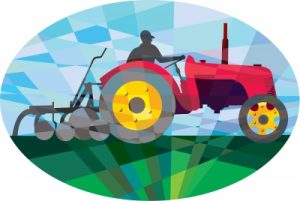
“Old MacDonald had a Smart Farm” – How Cloud Computing and IoT are Helping Farmers
 When it comes to agriculture and farming, success is always dependent on cycles of one kind or another – seasons change, precipitation varies, climate patterns shift. Basically, there are times of plenty and there are times of great demand, so farmers need to automatically scale their resources and provision according to immediate needs and their own spending, products and other policies.
When it comes to agriculture and farming, success is always dependent on cycles of one kind or another – seasons change, precipitation varies, climate patterns shift. Basically, there are times of plenty and there are times of great demand, so farmers need to automatically scale their resources and provision according to immediate needs and their own spending, products and other policies.
Doesn’t that model sound familiar? Is anybody else thinking about cloud computing? While the shifting, cyclical demand creates plenty of uncertainty for farmers, the sporadic, constantly changing nature of needs versus spare capacity creates an ideal environment for cloud computing models to thrive.
If cloud computing and IoT are applied in the field of agriculture efficiently, it will prove to increase overall productivity of the cultivated land. In addition to storing the information in the cloud, information management of all sorts of data related to cultivated land, including location, land rights, area, and soil and land characteristics can be integrated.
At the same time, smart farming is desperately needed as studies predict the need for food production will increase by approximately 70% by 2050 to almost 10 billion in order to meet the demands of a rapidly rising world population. This is why several private companies are also starting to be active in this field, such as Anemon (Switzerland) or eCow (UK). Additionally, smart fishing is at initial stage with some projects in Europe, South Korea, North America and Japan.
- The benefits of smart farms
The primary benefit offered by IoT sensors is their ability to provide incredibly precise data. That data can then be used to improve farming techniques to produce larger, high quality crops. Highly controlled indoor growing methods are yet another area in which smart farming is taking center stage. By using these methods, researchers can monitor growing environments in order to collect and share data, resulting in reproducible climate recipes. Researchers can use this data to tweak a variety of climate variables, such as air temperature, carbon dioxide, dissolved oxygen, humidity, electrical conductivity and more.
Cloud computing and the Internet of Things are catching on for large providers of agricultural services and as tools to help agricultural researchers in the field and in the lab. Agricultural cloud computing use cases are wide ranging, from the refinement of planting and harvesting operations to research based on the integration of global positioning data and in-field studies.
- Drones help keep a close eye on crops
Use cases for agricultural production and research projects using cloud computing and IoT go far beyond simple remote hosting. A Boulder, Colorado, software company is making it easier for farmers to monitor and harvest their crops through data gathered by aircraft and drones. GeoVisual Analytics, founded in 2010, is one of the companies with a base at the Western Growers Center for Innovation & Technology in Oldtown Salinas. Through the company’s software and aerial data, a grower is able to observe an entire crop over many acres and count plants, and determine how many are healthy and ready to harvest. The technology GeoVisual Analytics offers is part of the many high-tech services that will help agriculture companies harvest more crops more efficiently.
Traditionally, agriculture or farming is an activity whose knowledge is passed down many generations together. The information on the methods and science of farming is limited only to the farming community. However, sharing information and knowledge is very critical for better productivity in agriculture. One way increase the quality and quantity of agricultural production is using technology and cloud computing to make farms more “intelligent” and more connected.
Photo source: http://www.freedigitalphotos.net/





